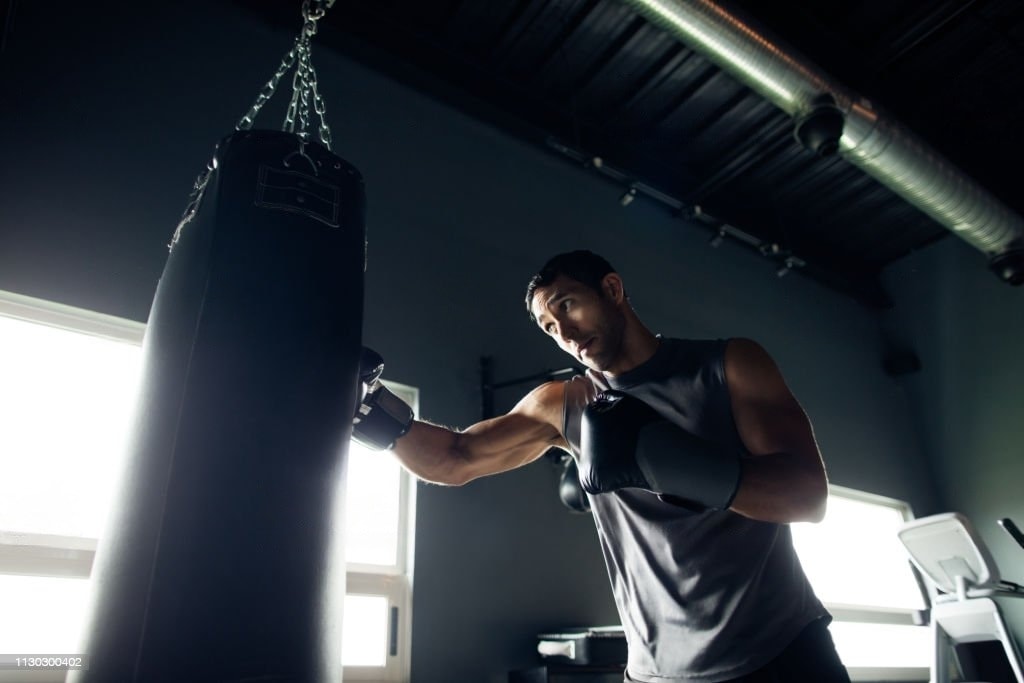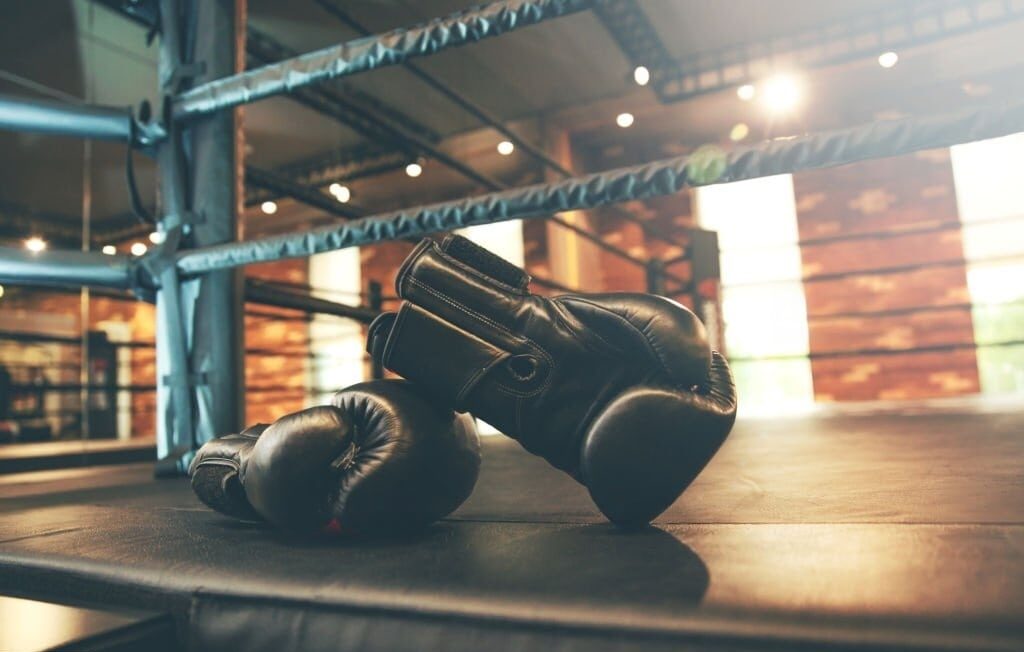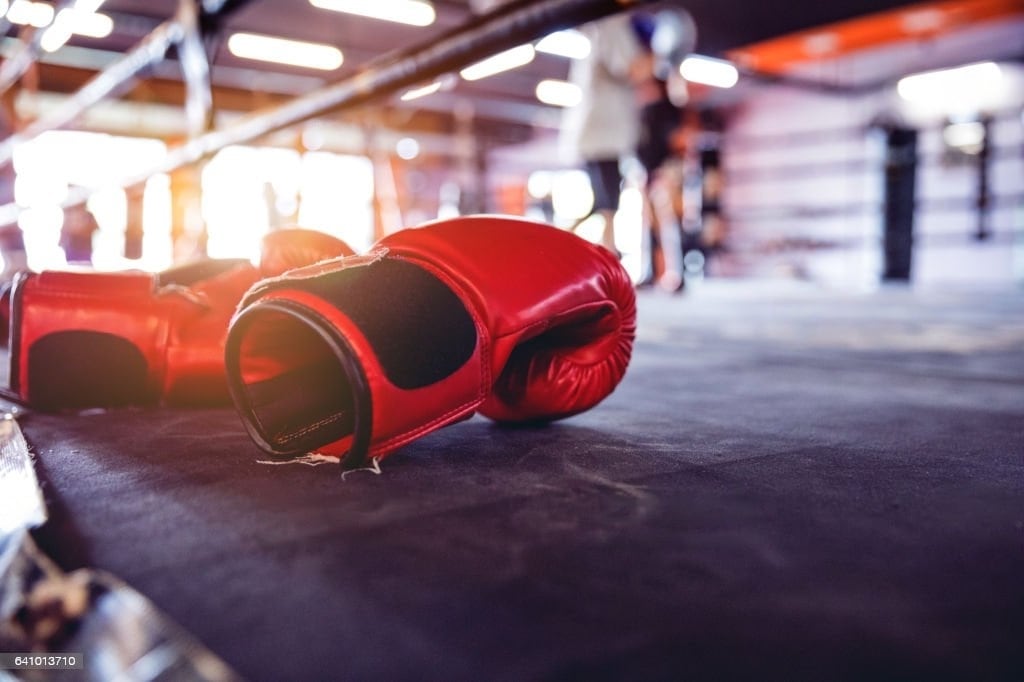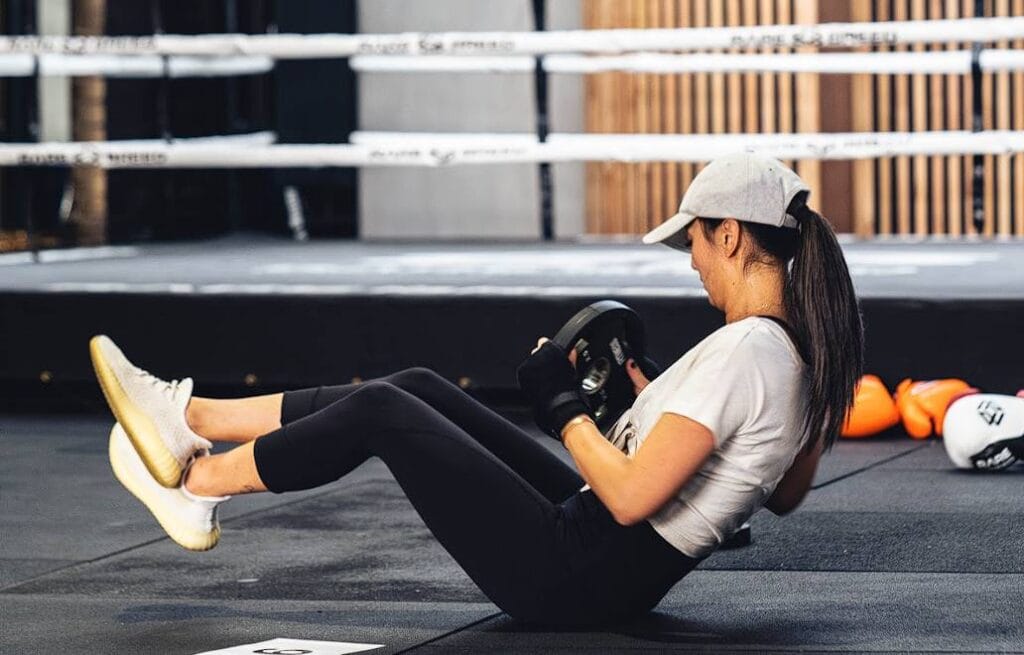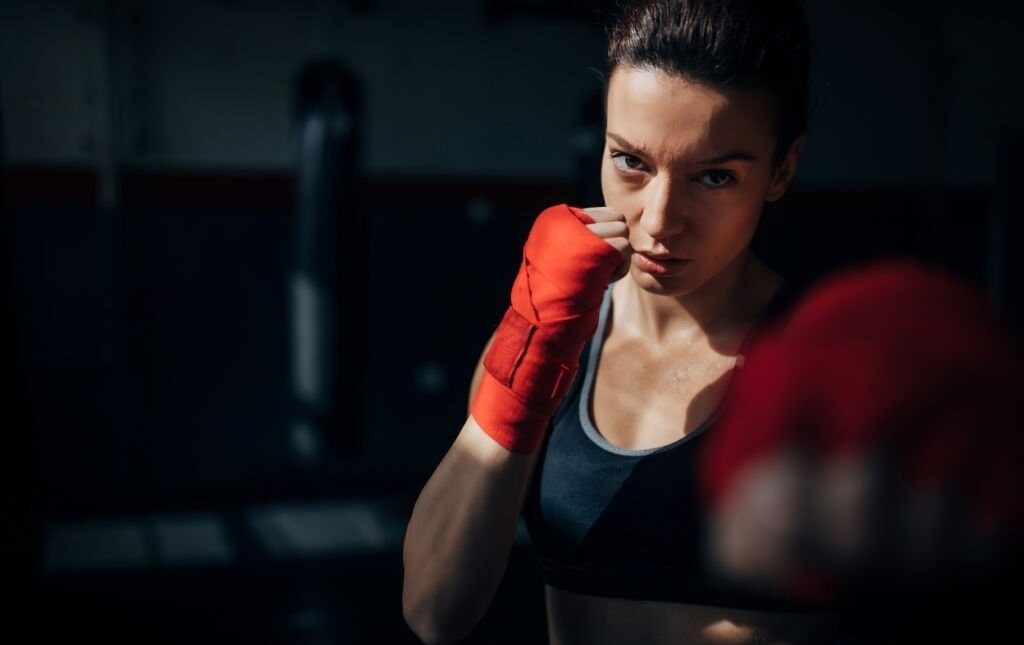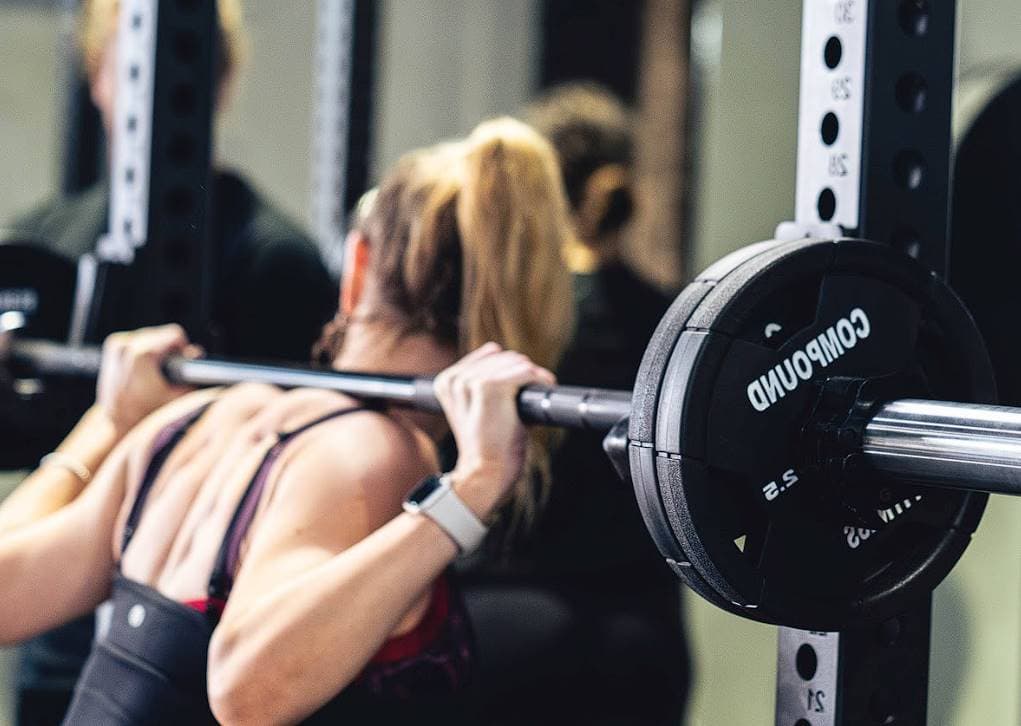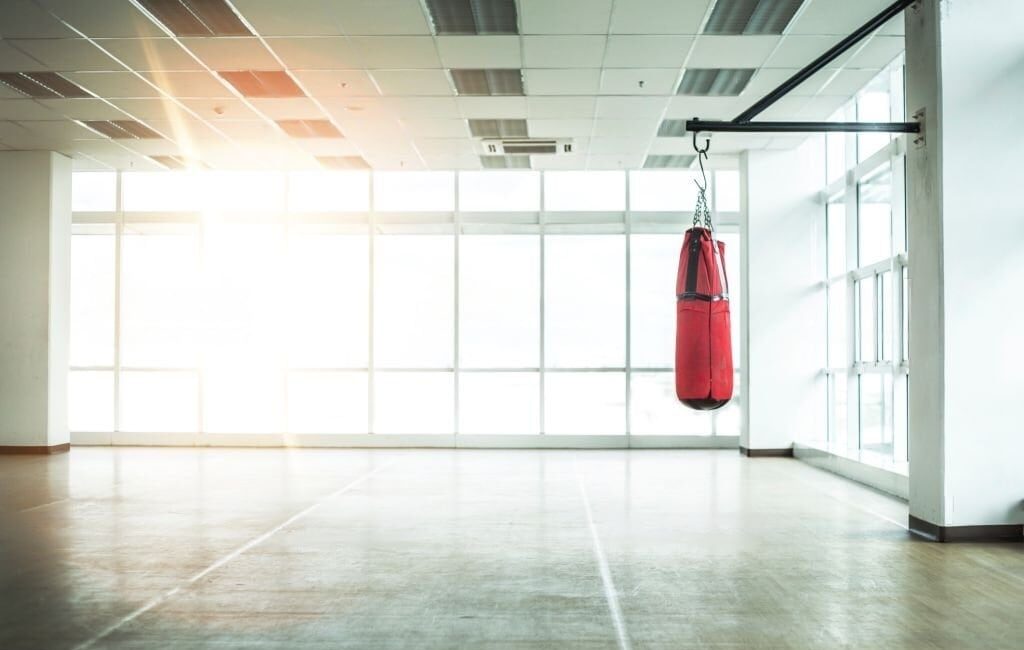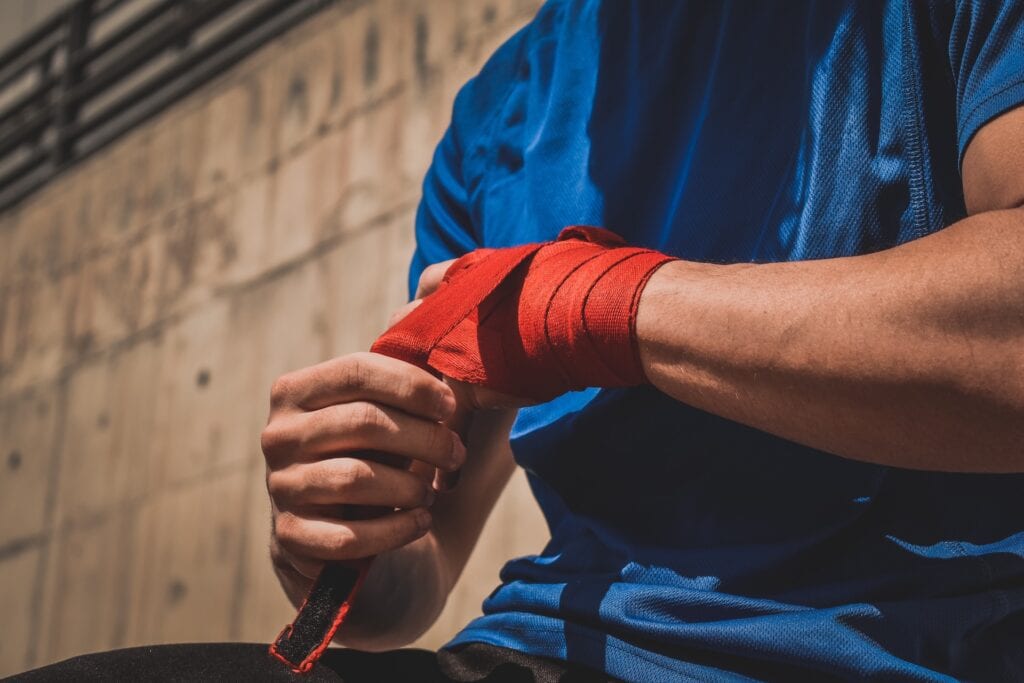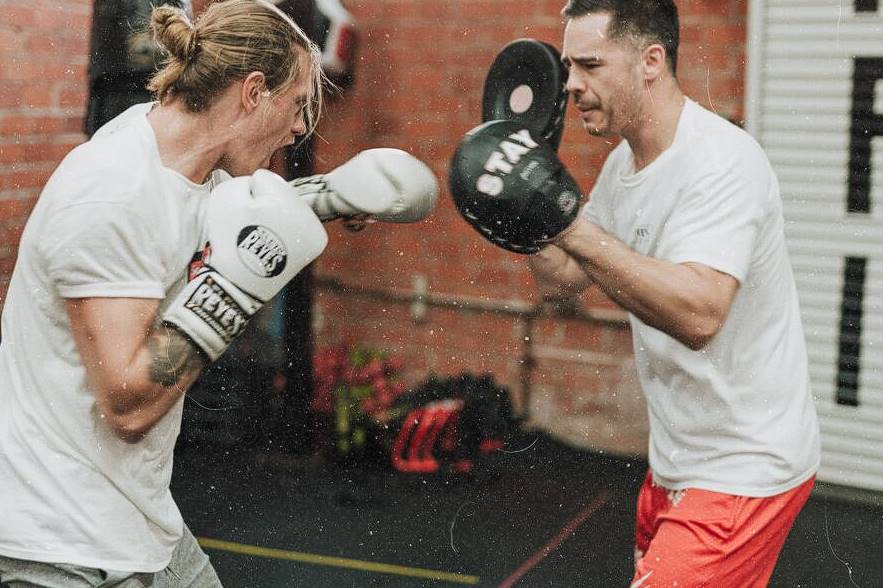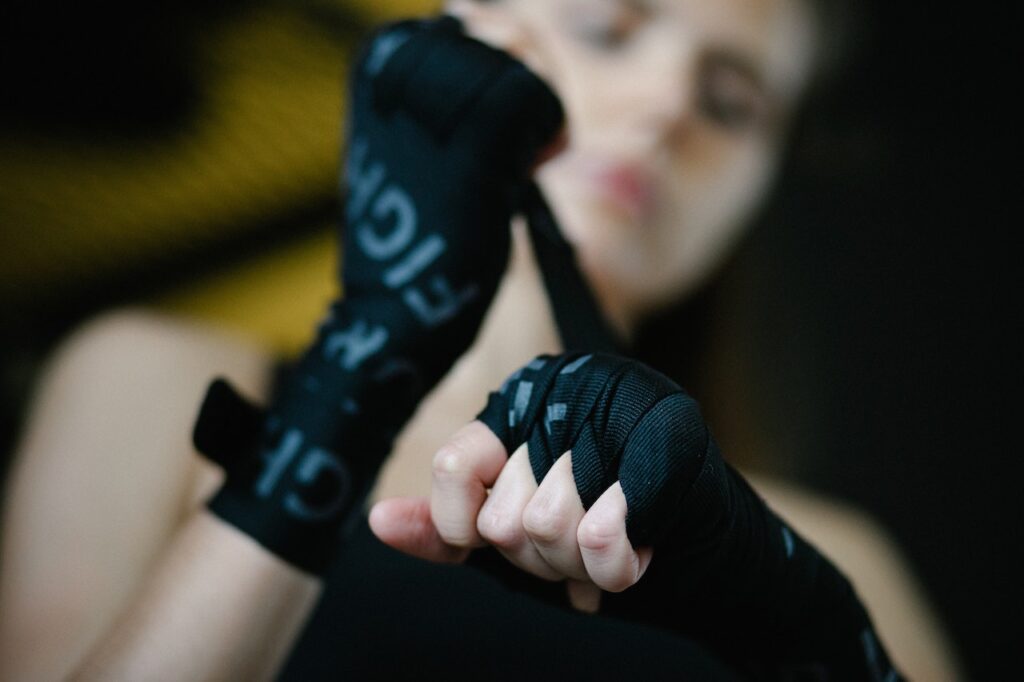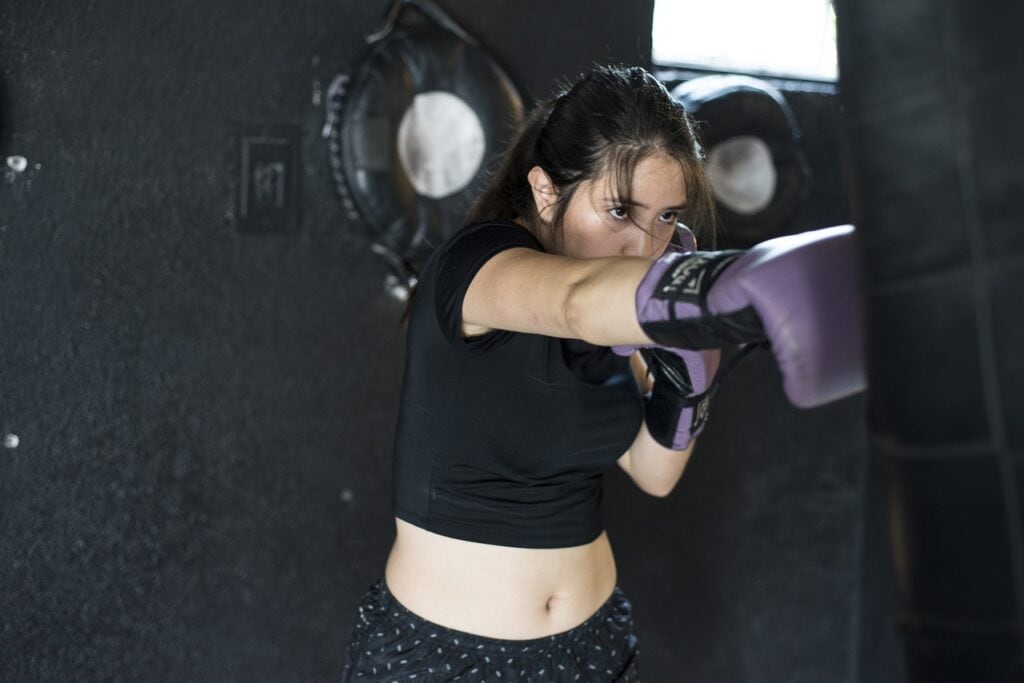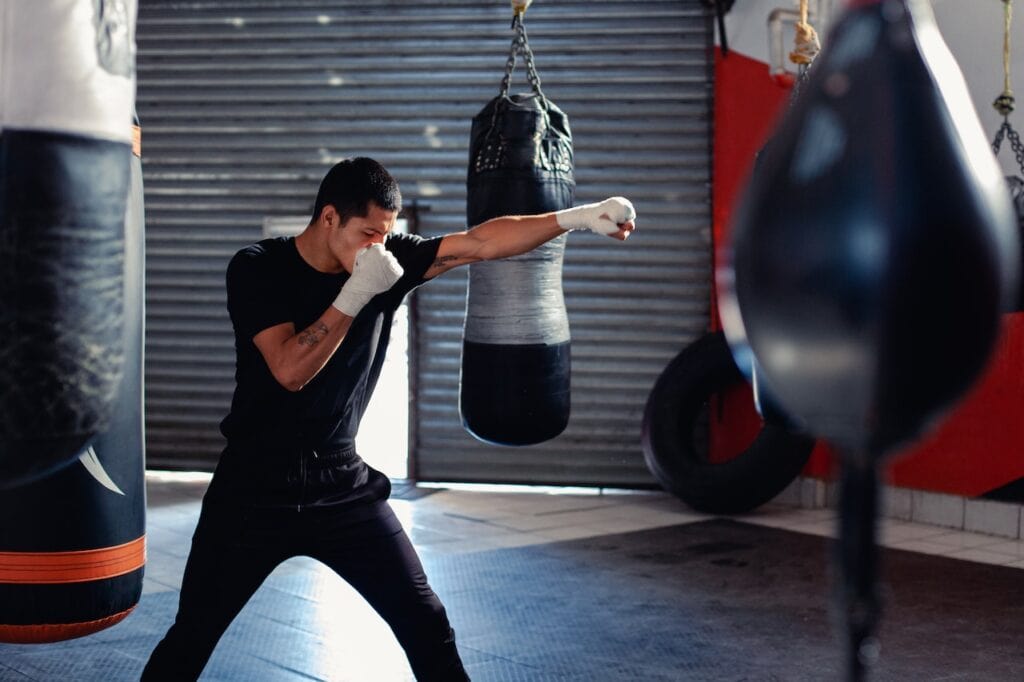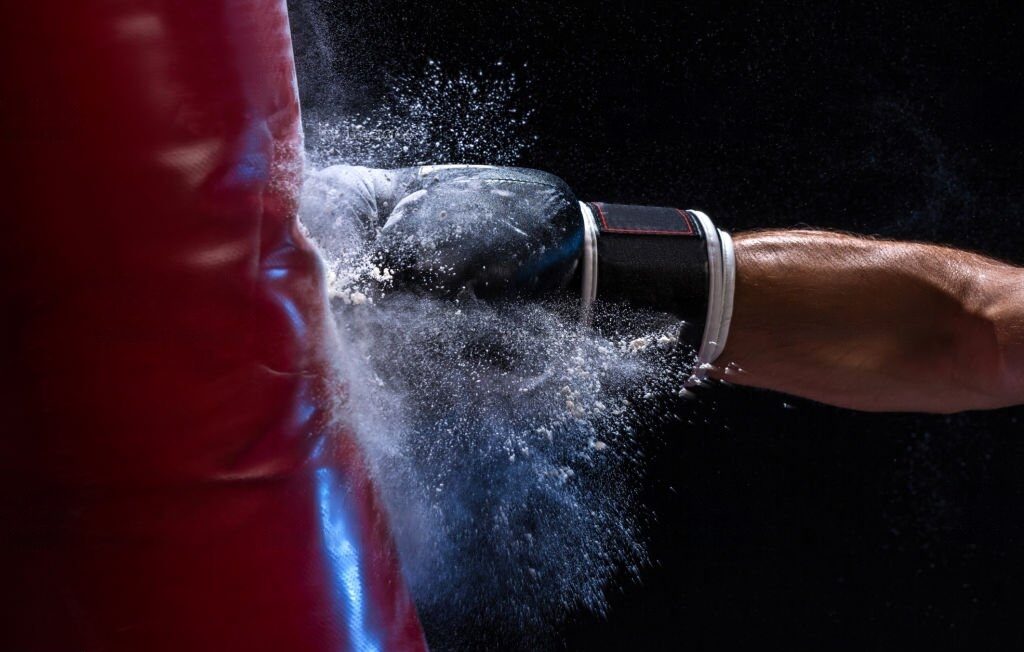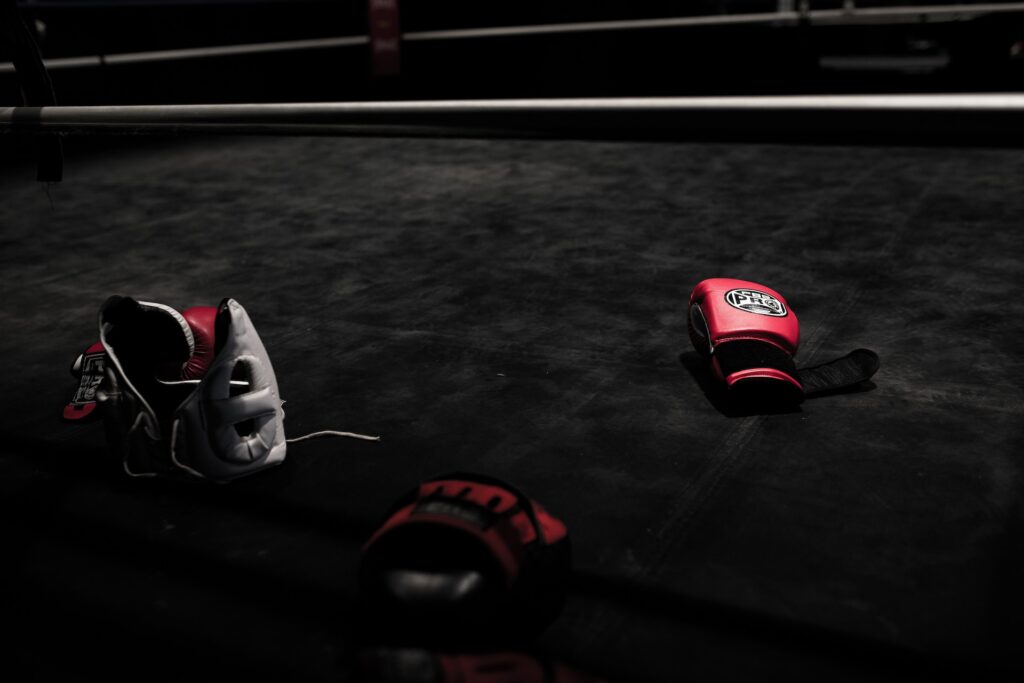One of the most important functions of life is breathing. It comes before any other difficult fighting moves, including strategy, technique, and others. If you were never taught how to breathe properly in the first place, it is quite easy to forget how to do so. However, before you entered the ring and became preoccupied with all the fighting, breathing always came naturally to you.
You are alive and probably enjoying boxing if you are reading this. If you are reading this, you are breathing.
Let's check how well you're breathing right now, shall we?
Is it lacking depth? Do you take all of your breaths through your mouth only? Do you have movement in your shoulders and chest? Are you chewing on something while reading this at the same time?
Most of us don't give much thought to breathing, primarily because we don't have to do it actively. How we live and the activities we engage in might unintentionally and adversely affect the quality of our lives. How we breathe can be affected by factors such as our daily stress, exercise, or lack of activity.
The rearranged breath will have an impact on how we feel and how well we perform when performing the things that bring us delight. For example, humans must take in oxygen and expel carbon dioxide when we engage in physical activity such as working out, hiking, or striking a punching bag for 8-12 rounds.
Boxing workouts are known to be among the most strenuous workouts around. Even if you aren't required to focus on your breathing regularly, doing so will surely affect you. Being present and in control of your breathing will assist you in effectively managing the stress you experience due to living your daily life. It will also assist you in effectively managing your heart rate from training for boxing or other hard exercises.
Many different breathing exercises can assist you in lowering your stress level, lowering your heart rate, and speeding up your recovery. In this section, we will go through the breathing strategy you can immediately put into practice to improve your breathing.
What Is Box Breathing?
Humans have used breathing exercises for many millennia, and with good reason. You, too, can begin doing this today, as our modern world has transitioned into a world that moves faster. Box breathing is a well-known style that the United States Navy Seals adopt for stress management.
Box breathing is a straightforward strategy that, when included in your routine, can help you keep your tension under control and rapidly regain your concentration. This very breath has a lot of history. Pranayama, also known as the yogic art of breathing or breathing gymnastics, is where it all started. Pranayama is the practice of controlling one's breath.
Breathing Techniques for Fighting
Different breathing for different movements
Every action receives its vitality from the air that is breathed in. Breathing should also be slow and deliberate if the movements are slow and deep. Breathing in short, sharp bursts will be necessary if your movements are rapid and explosive.
The nature of your breath needs to alter to complement the changes in the character of your motions. Learning how to breathe effectively during a physical confrontation needs mastery of not just one but several distinct breathing styles.
It is uncomfortable to breathe slowly while moving swiftly, yet it is also uncomfortable to breathe quickly while moving slowly. Both of these situations are unpleasant. You may throw punches while gently exhaling after taking a deep breath. Notice how your punches make it appear like air is being forced out of you? It is because the contraction of your muscles and the rate at which you breathe naturally work together.
Slow Breathing Technique for Slow Movements
Taking deep breaths and exhaling slowly is an excellent way to refresh yourself. It has a calming effect on the mind, enabling you to rest, think clearly, and conserve more energy. It would be best to take steady, deep breaths when moving around the ring, either in between rounds or when you are out of range of your opponent. (Pretty much any time you are not slipping swiftly or firing punches.)
How to take deep breaths slowly
- Take a deep breath in and out through your nose.
- Exhale calmly while doing so through the nose.
The most complete and efficient breathing method is inhaling and exhaling through the nose. It is superior to shallow mouth breathing, which often delivers oxygen to the chest as it draws air deeper into the stomach. As a result, it provides the body with more oxygen.
Relax by taking deep, slow breaths.
Slow breathing is not meant to be a competition in which participants try to hold their breath or take an excessively long time to inhale and exhale. Please pay attention to your breathing and take it as slowly as necessary to feel more at ease. The most skilled fighters also have exceptionally quiet breathing, which contributes to their overall level of relaxation.
They can maintain a steady breathing rate even when moving quickly about the ring, blocking punches and slipping them. Because of this, they can conserve their breath for the quick bursts of energy they use when throwing punches. If you're starting, likely, you won't be able to maintain a slow breathing rate while you're playing defence, at least not right away.
Fast Breathing Technique for Fast Movements
Breathing quickly is essential for performing quick, explosive motions such as hitting, defending, slipping, and quick footwork. Your body can send off unexpected bursts of energy when you breathe quickly because it receives the quick jolt of energy it needs. However, rapid breathing can leave you exhausted and short of breath when done improperly or to an extreme (which is VERY COMMON).
How to take quick breaths
- Take a breath through the mouth, the nose, or, preferably, slowly through the nose. Taking a breath in through the mouth is OK (LEAST PREFERABLE)
- Quickly exhale via the lips in brief bursts (one burst for every quick movement, such as a punch, slip, dash, etc.).
The most effective method for taking in more air and maintaining a calm state is to inhale gently. However, there will always be situations in which you will need to inhale quickly through the mouth (such as during exchanges).
Make an effort to breathe in without opening your lips (you run the danger of breaking your jaw if you are punched), and make an effort to breathe in more deeply into your stomach rather than into your chest (too shallow and not much oxygen absorption). When you exhale, the air that comes out of your stomach will give you more power than the air that comes out of your chest.
The difference between fast breathing and slow breathing
The most important advice regarding breathing is to realise that rapid breathing results in a faster exhale. However, breathing quickly does not necessarily result in a quicker air cycle.
So many beginners soon become exhausted when they move quickly because they still employ the slow breathing technique, but they are simply doing it faster. A faster breathing rate (rapid inhalation, faster exhale) can cause you to hyperventilate, become short of breath, and fatigue out more quickly.
Still, the objective of quick breathing is to slow down one's breathing by taking SLOWER breaths in and QUICKER breaths out.
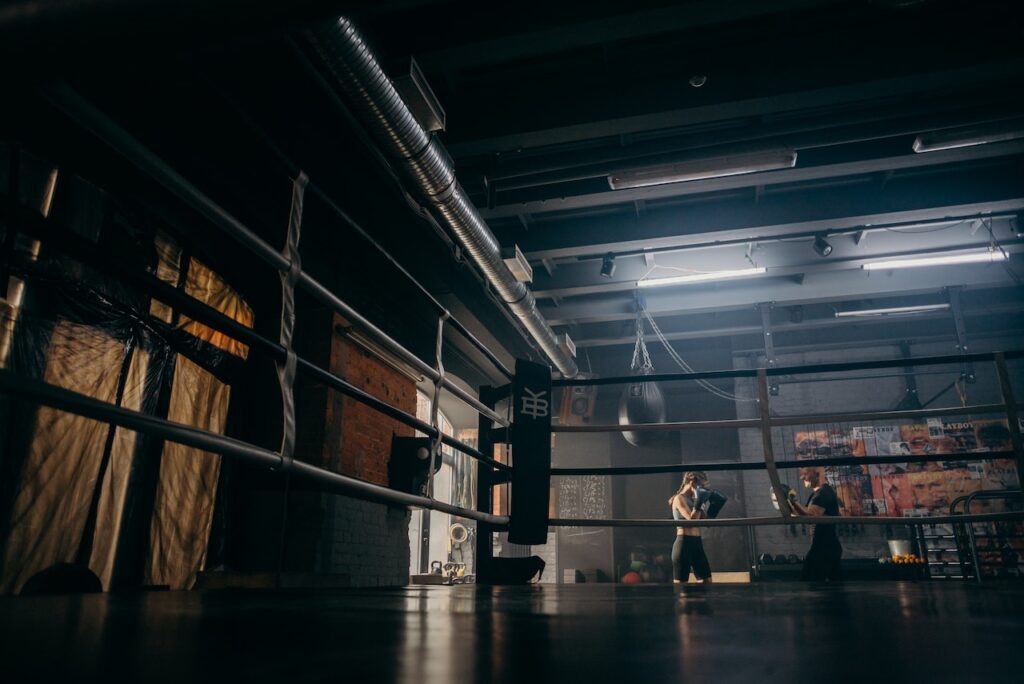
The Power of Four | Box Breathing for Your Boxing Workouts
Benefits of box breathing
There is substantial evidence to suggest that practising focused deep breathing can help calm and regulate the autonomic nervous system, as stated by the Mayo Clinic (ANS).
This system controls involuntary actions of the body, including temperature regulation. In addition, it can bring down blood pressure and instantly produce a sensation of relaxation.
The shallow breath holding causes a buildup of carbon dioxide in the blood. When you exhale, an elevated level of carbon dioxide in your blood activates your parasympathetic nervous system and improves the cardio-inhibitory response of the vagus nerve. This results in serenity and relaxation throughout the body and mind.
Box breathing is an effective technique for relieving stress and elevating mood. Because of this, it is an excellent treatment for illnesses such as depression, panic disorder, post-traumatic stress disorder (PTSD), and generalised anxiety disorder (GAD).
Additionally, it can aid in treating insomnia by making it easier to relax your nervous system in the evening before bed. Box breathing has even been shown to be effective in assisting with the management of pain.
How to Box Breathe
It is time for you to learn how to box breathe now that you are familiar with the science that underpins it and how it might benefit you in your fitness training.
Please take a deep breath through your nose and hold it for a count of four to fill your lungs with air while drawing air into your stomach.
Try to stop breathing for four seconds and exhale as little as possible.
Put your jaw in a relaxed position and exhale slowly and steadily through your mouth for four seconds, as if you were fogging a mirror.
Try to hold your breath for a whole four seconds.
Repeat steps 1 through 4 until you feel less tense and more able to concentrate. When you next feel agitated or short of breath, take between 30 and 60 seconds to focus on your breath and how you are thinking about the situation. If four seconds is too long, it is quite acceptable to begin your practice with only two or three seconds so that you can position yourself for success. Then, when you finally get the hang of it, you'll be able to step up your count.
When to Box Breathe
Let's give it a shot right now so you can remember it the next time you're punching the heavy bag between rounds or doing a cool-down routine. Even on a genetic level, the more frequently you practice this breathing technique, the more benefits you will derive from it. Researchers have shown that practising breathwork can lessen the activation of genes connected with stress and inflammation.
Therefore, breathing normally will result in both immediate and long-term benefits to one's health. Begin with just one cycle of box breathing while you're not working out, and gradually increase the amount of time you spend doing it each day until you're doing it for five or even 15 minutes. Box breathing is a simple technique that can help you modify your response to stress and your mentality.
Why Breathing Is Crucial In Boxing
1) Helps Maintain Energy Levels
As a combatant, the ability to breathe is inextricably linked to your gas tank. Many boxers, particularly those relatively new to the sport, wonder why they become fatigued rapidly during bouts. After a couple of rounds, they feel exhausted, with heavy arms, rapid breathing, and difficulty moving about the ring. Additionally, they are having trouble breathing.
It is because the body is deficient in oxygen, and a buildup of lactic acid occurs whenever there is an inadequate supply of oxygen to the muscles. A further inhibition of anaerobic respiration, which is the root cause of weariness and discomfort in your body, is caused by increased amounts of lactic acid in the muscles.
Boxers often talk about gaining that "second wind" when they are weary in the middle of a fight, but the reality is that to accomplish this, you must first ensure that you are breathing correctly. Take deep breaths and ensure you're getting enough oxygen to keep going for as long as needed.
If you don't work on your breathing skills, you may likely feel tired more quickly, which will have a negative impact not just on your physical performance but also on your mental state. You want to avoid being in a position where you must go through all six rounds while feeling completely exhausted.
2) Keeps You Moving
Movement is yet another essential component in boxing, and you should expect to be moving all the time throughout a tense matchup because of this requirement. Movements of the head and those, the upper and lower body, the sides of the body, and the body all demand a certain amount of energy. Your energy will decrease rapidly if you do not practice correct breathing.
When it comes to combat, evasion increases proportionately with your mobility. Being evasive makes you more difficult to track down and attack. You simultaneously develop the ability to move continually and effortlessly navigate to advantageous positions within the ring. You will be able to move gracefully around the ring without becoming fatigued if you have a sufficient amount of oxygen flowing through your body.
You might even find yourself in some tight places for the counterattack that could assist you in scoring points, which would alter the tides of the game in your favour. But, on the other hand, if you are going up against an adversary who could be better conditioned, there is a chance that they will tire out more quickly, giving you a significant edge, particularly as the fight goes on.
3) It Adds Pop To Your Punches
You want your opponent to feel the power of your shots. Boxers like Manny Pacquiao and Floyd Mayweather appear to have no trouble landing devastating punches that harm their opponents and knock them out. It is something that we see regularly. But we had no idea that it had so much to do with how they breathe and how they conserve their energy.
When you throw a punch, you should rapidly exhale oxygen through your nose, and when you are not throwing a punch, you should breathe in oxygen. Oxygen provides the muscles with the energy they need by catalysing the breakdown of glucose, a vital step in making fuel for the body.
Because of this, you will become exhausted slowly. Therefore, it is also essential to train your aerobic and anaerobic endurance if you want to sustain your knockout power over the entirety of about. It doesn't matter if it's a four-round amateur fight or a 12-round professional fight; make sure you have enough oxygen in your tank to decide whether you win.
Boxers typically have a low body fat percentage and engage in very little resistance training due to the high oxygen demands of their muscles. Therefore, when a fighter has lost weight, they can better conserve their energy, allowing them to throw quicker and more forceful punches.
4) Keeps You Composed
In conclusion, but certainly not least, practising proper breathing helps you maintain mental clarity and composure, which is essential for making rational choices amid intense combat.
Everyone is aware that boxing is not only a battle of the body but also of the mind. So when you're feeling worried, you should first focus on your breathing rather than trying to think positively. Deep breaths can help you slow down the pace of things, giving you more time to evaluate your line of thought.
It is easy to become winded and lose your composure when engaged in a battle in the centre of the ring, where punches fly everywhere. In these high-pressure situations, you need to be able to think on your feet and make important decisions. But, unfortunately, you don't have much room to gather your thoughts, step back, and figure out what's happening.

Relaxation techniques such as deep breathing can assist. When you have command over your physical self, you can exercise much greater judgment. A seemingly insignificant decision can significantly affect the outcome of any given conflict. You will have a mental advantage in combat if you can maintain your composure and think clearly.
You do not want to enter the pocket while your opponent is still shooting shots while you are out of breath and gasping for air. That renders you helpless and vulnerable. So always remember to take deep breaths and exhale fully as you move around and throw punches.
How to Practice Breathing
The ultimate purpose of practising proper breathing is to calm the mind and body so that natural movement can resume. It is not about pushing your body to breathe more slowly or quickly; rather, it is about ensuring it receives the appropriate amount of oxygen. Therefore, you shouldn't have to worry about whether or not you're taking "the perfect breath."
Breathing practice aims to help you get acclimated to fighting without letting outside influences (nervousness, opponent pressures, etc.) affect your breathing. It can be accomplished by becoming accustomed to fighting. Your breathing pattern should be considered an extension of your fighting pattern.
When you are fighting at your rhythm, you will not only feel comfortable, but you will also be able to hit, defend, and move whenever you want, with expending very little effort. On the other hand, if you fight at your opponent's rhythm, you will feel as if you are always obliged to attack or defend when you are not ready (when you are unable to breathe), making it difficult to focus.
Practising Slow Breathing
The greatest technique to hone the skill of slow breathing is to perform rapid (non-explosive) motions while simultaneously practising slow breathing. Skipping rope is an excellent kind of cardio workout. If you can train yourself to take slower breaths while jumping rope, you will be in excellent shape to perform in the boxing ring. It is one of the main reasons why I urge everyone to use the jump rope.
Moving around the ring as a partner throws multiple mild tapping strikes at your elbows is another drill that I recommend for beginners. When they face a genuine opponent for the first time, beginners immediately understand how easily they can become overwhelmed by fear. (This is why beginners perform so well on heavy bags yet get exhausted when sparring!)
The oxygen travels deeper when you breathe through your nose, relaxing your entire body. So get into the habit of taking long, slow, and deep breaths through the nose as much as possible. Even when you're not boxing, go about your normal day and remember to nose breathe everywhere you go, including school, the office, and morning runs.
Practising Fast Breathing
The practice of quick breathing can be made much simpler by performing rapid combination motions. It can be accomplished via shadowboxing or throwing combinations on the heavy bag. Other options include using the bag for bag work. One short breath for every one of the quick movements. Y
our objective is to develop the habit of breathing more quickly by practising releasing just the right amount of air after each successful movement. When you exhale quickly, it's incredibly simple to run out of air before you realise it! Also, if you continually become fatigued (which may indicate bad technique or inadequate conditioning), you are likely performing the activity incorrectly.
Training with your mouthpiece is another fantastic suggestion for perfecting your breathing technique. Many trainers instruct their fighters to run while wearing a mouthpiece and to strike a bag while wearing a mouthpiece so that the fighter can become accustomed to breathing via the mouthpiece at all times.
However, training with a mouthpiece may become unnecessary at some time when you have mastered proper breathing techniques. After all, the mouthpiece is designed to encourage you to take deep breaths through your nose and then forcefully exhale through your mouth (the mouthpiece is perfect for blocking exhalations).
What Kind of Breath Is Best For Performance?
"Good breathing" refers to breathing that is even and under control. If you want to improve your present breathing, the American Lung Association recommends breathing through your nose and your belly. When you breathe in via your nose, the air you breathe will be filtered, warmed, and humidified. It cannot be accomplished through the use of your mouth.
People with congestion in their sinuses or who need to improve their oxygen intake may find that they need to switch to breathing through their mouth. Because breathing needs you to draw air into your stomach and use the diaphragm, a muscle related to breathing, your stomach is engaged in breathing.
The diaphragm can be strengthened by practising diaphragmatic breathing, sometimes known as "belly breathing." It will result in a lower demand for oxygen, less effort and energy required to breathe, and a slower breathing rate.
If you slow down the rate at which you breathe, you will also slow down the rate at that your heart is beating. Your quality of life will increase if you pay attention to your breathing technique, particularly whether you are preparing for a fight or boxing. It will allow you to avoid stress on the muscles in your upper back, chest, and ribs.
If you want to breathe correctly using your diaphragm, you should begin by either standing or lying comfortably. Then, place one hand on your chest and the other on your belly. When you inhale via your nose, the air will be forced down into your belly, which will expand your belly and fill your lungs with oxygen. When you exhale, you should be calm and controlled so that your lungs are entirely emptied.
The Importance of Breath For Recovery and Performance
Proper breathing has many positive effects on one's health, including but not limited to improved sports performance, quality of sleep, feelings of relaxation, stress reduction, and increased resilience.
In addition, you may benefit from breathing with purpose and on purpose, whether you are a rookie boxer or an experienced fighter starting your adventure with FightCamp. By slowing down both your breathing and your pulse rate between rounds, focused breathing can assist you in better managing the tension that you experience.
Studies have revealed that when you breathe solely through your nose, rather than only through your mouth, you take fewer breaths than when you breathe exclusively through your mouth. In addition, your heart rate will increase more when you breathe solely through your nose than when you breathe through your mouth.
It is important to recognise the advantages of taking breaths via the nose, followed by a deliberate effort to exhale through the mouth to make room for core bracing.
You will see an improvement in your overall performance throughout the rounds. If you aren't sure what the forced exhalation is, try visualising yourself hushing a dog, or you might hear the FightCamp trainer exclaim, "sha!" as they punch or kick. While exerting energy from your body, press your lips together and let the air out of your lungs. Simply by visualising someone tickling you as you exhale, you can strengthen your abdominal muscles, protecting your spine.
Conclusion
After you've been made aware of the significance of breathing, give some thought to how you breathe, particularly when you're just starting in a game. You'll notice a significant improvement in your performance, enabling you to keep going for longer and land harder blows.
Who knows, you needed to adjust how you breathed to feel better.
The practice of box breathing is just one of many different types of breathing exercises that can be helpful in the management of day-to-day stress. Studies have shown that this method, along with others, can deliver both short-term and long-term benefits to the user.
Even though there is a need for additional study in this area, the evidence presented in the studies that have been done so far is persuasive that box breathing can be an effective technique in stress management, regaining attention, and boosting pleasant emotions and states of mind.
Frequenly Asked Questions
What is the most common boxing breathing technique?
One of the most common boxing breathing techniques is diaphragmatic breathing, also known as belly breathing or deep breathing. In this technique, boxers focus on breathing deeply into their abdomen rather than shallow breathing from the chest. This helps maximize oxygen intake, relax the body, and improve overall lung capacity.
Can boxing breathing techniques help with stress management?
Yes, boxing breathing techniques can be effective for managing stress. Controlled breathing helps activate the body's relaxation response, reducing stress levels and promoting a sense of calmness. By incorporating these techniques into their training routine, boxers can not only enhance their physical performance but also improve their mental well-being.
Are there specific breathing techniques for different phases of a boxing match?
Yes, boxers can utilize different breathing techniques for different phases of a boxing match. During the resting periods between rounds, they can practice deep diaphragmatic breathing to replenish oxygen levels and promote recovery. During intense exchanges or combinations, boxers may engage in shorter, sharper breaths to maintain focus, generate power, and ensure proper oxygenation.
Can boxing breathing techniques help improve punching accuracy?
Yes, incorporating proper breathing techniques can enhance punching accuracy. By focusing on controlled breathing, boxers can improve their overall coordination and body control, leading to more precise and accurate punches. Additionally, maintaining a relaxed state through proper breathing can help reduce tension and allow for smoother and more controlled movements.
Can non-boxers benefit from boxing breathing techniques?
Yes, boxing breathing techniques are not limited to boxers alone. Anyone, regardless of their athletic background, can benefit from incorporating these techniques into their fitness routine or daily life. These techniques promote proper breathing mechanics, relaxation, and improved oxygenation, which can be beneficial for overall well-being, stress management, and enhancing physical performance in various activities.
